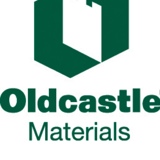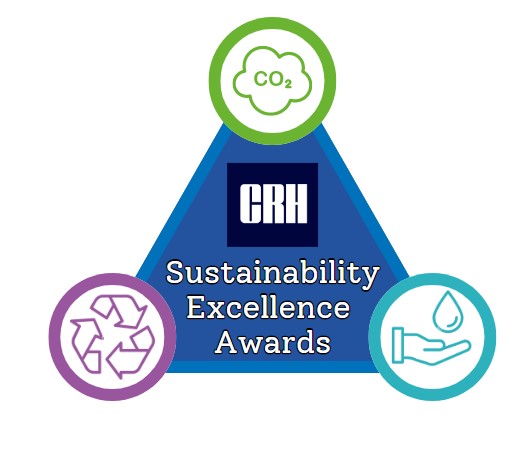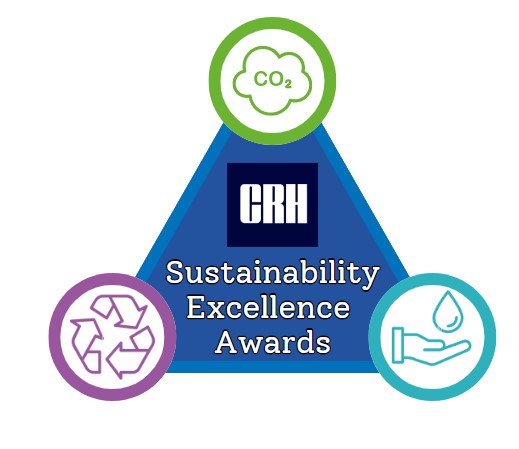Information
-
Audit Title
-
Conducted on
-
Prepared by
-
Location
-
Personnel
-
Add location
-
Select date
RISK ASSESSMENT
-
Documted Risk Assessment in Place
-
Risk Assesment Policy clearly communicated to locations.
-
Risk Assessment Policy specifically addressed: A.) Non-rountine tasks B.) Work carried out by subcontractors
MOBILE PLANT SAFETY
-
Documeted site transported rules in place, based on a site transport assessment
-
Add media
-
Site transport rules adequately addressed:<br>A.) Vehicle-pedestrain segretation
-
Add media
-
b) Edge protection for slopes/benches.<br>
-
Add media
-
c) Driver training .
-
d) Driver assessment.<br>
-
Evidence that drivers are trained. <br><br>
-
Evidence that drivers are regularly assessed. <br>
-
Evidence of documented daily pre-use inspections in place for company on-site vehicles.<br>
-
Evidence that seat belts or other equivalent protective device are in use by all drivers.<br>
-
Evidence that loads are being secured. (refers to CRH operated vehicles) <br>
-
Evidence that loads are within vehicle weight limits. (refers to CRH operated vehicles)<br>
-
e) Vehicle rules including: <br>
-
e.1) speed,<br>
-
Add media
-
e.2) alarms,<br>
-
e.3) reversing systems, <br>
-
e.4) testing <br>
-
e.5) use of mobile phones. <br>
-
Inspect at least one vehicle to ascertain if the following are in place:<br>
-
a) alarms, <br>
-
b) reversing systems, <br>
-
c) testing <br>
-
Observe at least one vehicle to ascertain if the site transport rules are being implemented on site.<br>
Isolation of Operating Machinery
-
Documented lock-out/tag-out or isolation policy in place. <br>
-
Documented lock-out/tag-out or isolation policy incorporates machine specific lock-out/tag-out or isolation rules. <br>
-
Evidence that all employees have been trained in the lock-out/tag-out or isolation policy. <br>
-
Evidence that relevant employees have been trained in machinery specific lock-out/tag-out or isolation policy.<br>
-
Evidence that regular checks of the integrity of the company's lock-out/tag-out or isolation systems are being completed.<br>
-
Examine at least one task involving lock-out/tag-out or isolation to ensure that the system is operated as per rules. <br>
Machinery Guarding
-
Documented system for regular checking of machinery guarding in place.<br><br>
-
Evidence that machines are not operated without the exposed moving parts being appropriately guarded. <br>
-
Add media
-
Examine procedure/s in place to prevent machinery being put into service without authorisation.<br>
-
Carry out an inspection on a number of machines to ensure that:<br>
-
d) Other moving parts are securely guarded as required.<br>
-
a) tail pulley guards are securely in place <br>
-
b) pinch point guards are securely in place. <br>
-
c) exposed shaft guards are securely in place. <br>
Confined Space Entry
-
Documented confined space entry policy for confined spaces on site are in place. <br>
-
Documented c<br>onfined space entry rules for each confined space identified on site are in place.
-
Add media
-
Evidence that employees seek prior authorisation before entering a confined space. <br>
-
Documented authorisation procedures for entry into a confined space forms part of the location's confined space entry policy. <br>
-
Evidence that all excavations over 1.5m (5ft) in depth have shoring or appropriately designed sloping in place. <br>
-
Inspect employees training records to ensure that they have received training in confined space entry rules.<br><br>
-
Examine at least one task involving entry into a confined space to ensure that the system is operated as per rules and includes the completion of the following: <br>
-
a) Process Isolation <br>
-
b) Electical Isolation<br>
-
c) Atmospheric testing as required<br>
-
d) Communications in place<br>
-
e) Emergency rescue adequate<br>
Working at Heights
-
Documented risk assessmen<br>ts for working at heights in place
-
Evidence that locations have location-specific operating rules for working at heights in place<br>
-
Evidence that locations have task-specific operating rules for working at heights in place.<br>
-
Evidence that when working at heights collective measures and/or personal protective equipment are provided in all cases as set out in the risk assessments<br>
-
Evidence that specific training is provided for all relevant personnel working at a height<br>
-
Examine at least one task involving Working at Heights to ensure that: <br>
-
Add media
-
a) Risk assessment completed <br>
-
b) Fall protection measures are in place before work commences<br>
Lifting Operations
-
Inspect training records to see evidence that the relevant personnel using lifting equipment have training in the use of the equipment.<br>
-
Inspect training records to see evidence that the relevant personnel using lifting equipment are competent in the use of the equipment.<br>
-
Examine specific areas around lifting operations to ensure that the area is designated as "out of bounds" to personnel.<br>
-
Evidence that site specific policies are in place to:<br>
-
a) Lifting equipment certification is in place. (Examine the lifting equipment register).<br>
-
b) Lifting equipment loading rates in place.<br>
-
Inspect at<br> least one piece of lifting equipment to ensure the following:
-
a) ensure that the lifting equipment is safe to use<br>
-
Add media
-
b) ensure the safe working load is indicated on the lifting device.<br>
-
Where mobile lifting equipment is used on/off site inspect the Lift Plan to ensure the following:<br>
-
a) weight of the item being lifted is assessed.
-
b) The reach of the lifting equipment is adequate <br>
-
c) The height of the lift is acurately assessed <br>
-
d) Assess the ground conditions to ensure that it is stable and has the capacity to support the dead weight of the crane, load, rigging and any dynamic conditions<br>
-
e) over/under ground utilities are identified and isolated, protected or marked <br>
-
f) access to the lift area is restricted<br>
-
g) wind speed is assessed before the lift commences<br>
-
h) account is taken of the load surface area before the lift commences <br>
Underground and Overhead Utility Dangers
-
Documented risk assessment for underground work in place. <br>
-
Evidence where underground works have been carried out on-site that the site survey for utility lines is in place. <br>
-
Documented risk assessment in place for the use of mobile cranes & excavators taking account of overhead/underground utility lines.<br>
-
Examine at least one task involving the use of mobile cranes, excavators or other equipment with lifting devices e.g. dump truck to ensure the following:<br>
-
a) That all underground or overhead utility dangers are adequately assessed <br>
Use of Personal Protective Equipment (PPE)
-
Documented Personal Protective Equipment (PPE) Policy in place for specific tasks where relevant. <br>
-
Evidence that no employee is permitted to work without the required PPE.<br>
-
Evidence that daily visual inspections are carried out at each location.<br>
-
When carrying out the site inspection, visually check that personnel are wearing the required PPE as per company policy. <br>
-
Add media
Conveyance and Storage of Materials under Pressure
-
Documented pressure relief systems in place on all pressurised conveying systems<br>
-
Evidence of regular checks on pressurised conveying systems. <br>
-
Inspect the maintenance schedules of pressure relief systems to ensure that they are maintained on a regular basis. <br>
-
Inspect the maintenance schedules of pressure relief systems to ensure that they are checked on a regular basis. <br>
-
Evidence that pressurised conveying systems containing a defective pressure relief system are not operated.<br>
-
Inspect a pressurised conveying system to assess if it looks in good condition<br>
-
Add media
-
Evidence that all employees who work with pressurized systems have been trained in proper usage. <br>
Work Zone Safety
-
Are all work zone personnel properly trained for their roles?<br>
-
Are supervisory personnel familiar with the OMG Work Zone Safety Best Practice Manual?<br>
-
Inspect a typical work zone to determine compliance and best practices.<br>
Employee Involvement in Safety Process
-
Is SLT an ongoing process for this company?<br>
-
Are there SLT trained facilitators available within the company?<br>
-
Is there a process for reporting Near Misses at this company?<br>
-
Are there weekly tool box talks conducted and documented at all sites?<br>
-
Are there safety committee's or equivalent in place that engage employees across all levels of the organization?<br>
-
Interview employees about SLT process, Near Miss, Tool Box Talks and Safety Committee's.<br>
-
Review documentation for the above referenced programs.<br>
-
Other Safety Related
-
Add media
-
Other Safety Related
-
Add media
-
Other Safety Related
-
Add media
Environmental - Stormwater
-
Is a copy of the storm water permit located on-site?
-
Is a copy of the Storm Water Pollution Prevention Plan (SWPPP) located on-site?
-
Is the SWPPP up-to-date? Note areas which need to be updated.
-
Has employee training been conducted and documented?
-
Are inspections being performed and documented according to SWPPP frequency?
-
Does the site discharge stormwater?
-
Have appropriate stormwater samples been collected?
-
Is the chemical analysis available on-site?
-
Have chemical analysis results been submitted to the appropriate regulatory office?
-
Are BMP's noted in the SWPPP being followed?
-
Is rainfall information being recorded?
-
Are buckets used to catch oil or other open containers covered and/or not exposed to the weather?
-
Are stormwater discharge locations free of visible silt or other contaminants?
-
Is there visible trackout from the facility?
-
Is the property and surrounding ditches free of trash and litter?
-
Additional comments:
Environmental - Waste Water
-
Is a copy of the NPDES permit on-site?
-
Has appropriate sampling been completed?
-
Are chemical analysis results within permit allowance?
-
Are all controls being properly utilized and not bypassed?
-
At sites that do not discharge, are there any areas of concern with the settling ponds?
-
Additional comments:
Environmental - Air
-
Is a copy of the air permit on-site?
-
Is the facility in compliance with permit conditions? (production limits, hourly limits, temperature readings, etc.)
-
If no permit is required, is appropriate documentation kept on-site? (calculations, rule references, etc.)
-
Are sulfur content of fuel records available?
-
Is dust controlled on-site? (haul roads, crushers, conveyors, maintenance of other controls, etc.)
-
Are Maintenance, Startup, and Shutdown (MSS) Emissions being documented?
-
Does facility equipment list match what is being utilized on-site? (crushers, engines, conveyors, etc.)
-
Are maintenance records for equipment or control equipment available?
-
Have all appropriate emission tests (including NSPS "OOO") been performed and documented?
-
Are required mix type records maintained on-site?
-
Additional comments:
Environmental - Spill Prevention, Control, and Countermeasure Plan (SPCC)
-
If required, is a SPCC maintained on-site?
-
Is the information provided in the SPCC current and has it been reviewed in proper intervals (every 5 years)?
-
Has annual employee training been conducted and documented?
-
Are monthly inspections conducted and documented on-site?
-
Is secondary containment drainage log on-site and current?
-
Are containment drainage valves closed at the time of inspection?
-
Is appropriate secondary containment in place?
-
If present on site, are fuel transport tanks emptied or parked in areas that can provide containment?
-
Are tanks and drums properly labeled?
-
If tanks are not being used, are the tanks empty and marked "Out of Service"?
-
Are adequate materials, equipment, and other resources readily available to effectively control a spill?
-
Additional comments:
Environmental - Mining & Dredging
-
Is a copy of mining permit or mining authorization on-site?
-
Are mining practices following applicable mining regulations?
-
Are appropriate signs, berm, and fences in place?
-
If reclamation has started, is the reclamation plan being followed?
-
Is the site mining in a navigable water, flood plain, or flood way and are all state and federal requirements (404 permits) being met?
Environmental - Good Housekeeping
-
Are oil stains from leaks, drips, or small spills present?
-
Is used oil managed correctly? (burning, labeling, approved haulers, manifests, etc.)
-
Is universal waste handled properly? (batteries, light bulbs, etc.)
-
Is parts washer solvent, antifreeze, and other waste materials properly segregated and disposed of?
-
Does site appear clean and orderly? (5S, trash/garbage, metal storage, etc.)
-
Do floor drains and outfalls have appropriate controls?
-
Are SDS available on-site?
-
Additional comments:
Signatures
-
Signature of Personnel Interviewed
-
Signature of Auditor
-
Signature of Supervisor











